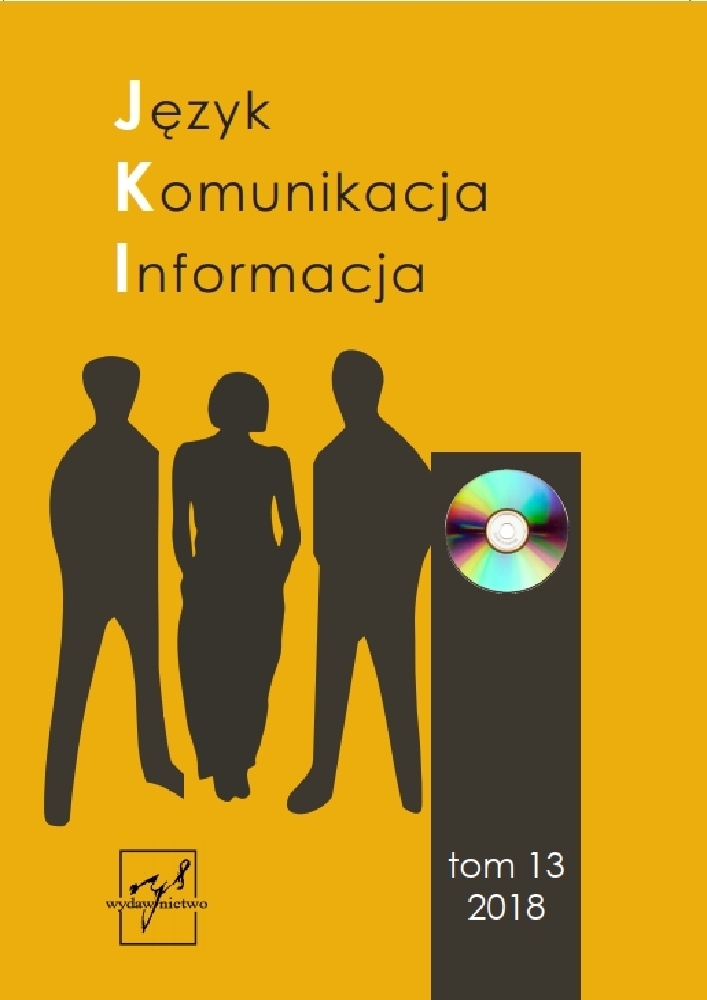Abstrakt
This article examines translation practices into Esperanto, a constructed language with 130 years of existence and which is meant to serve neutral international communication. As such, one of Esperanto’s practical applications is to render works from around the world and from different times accessible to a worldwide community of speakers. We analyse the role played by translation in the development of Esperanto and in the creation of an Esperanto community. We argue that translation into Esperanto possesses a key social function and conveys values that go beyond the mere transfer of semantics. In doing so, we apply an interdisciplinary perspective and draw on approaches from translation studies, linguistics, anthropology and intercultural communication studies. Placing these approaches within a dialogue is beneficial for a deeper understanding of the various strategies employed by Esperanto translators in order to accommodate and to inform the Esperanto cultural horizon.Bibliografia
Auld, W. 1997: La enigmo pri Hamleto. In: Pajleroj kaj stoploj. Rotterdam: Universala EsperantoAsocio.
Benjamin, W. 1992 [1923]: The Task of the Translator. In: Schulte, R. & Biguenet, J.: Theories of Translation. Chicago: University of Chicago Press.
Bhabha, H. 1994: The Location of Culture. London: Routledge.
Boddington, R. 2004: Evaluation of an Esperanto-Based Interlingua Multilingual Survey Form Machine Translation Mechanism Incorporating a Sublanguage Translation Methodology. Edith Cowan University, Thesis.
Buden, B. & Nowotny, S. 2009: Cultural Translation: An Introduction to the Problem. In: Translation Studies 2/2.
Burghelea, M. 2016: L’espéranto, entre idéaux universels et pratiques culturelles locales. Les cas français, belge et brésilien. Master thesis in Intercultural Mediation. Université de Lille 3.
Chaigneau, C. 1908: L’Espéranto et le spiritisme. In: La Revue scientifique et morale du spiritisme, Paris.
Chaves, S. 1986: La estonto dependas de ni. Rio de Janeiro: Internacia Jaro de Paco.
Cheung, M. 2014: Translation as Intercultural Communication: Views from the Chinese Discourse on Translation. In Bermann, S. & Porter, C. (Eds.): A companion to translation studies. Chichester: Wiley-Blackwell.
Coste, D. 2016: The Poetics and Politics of Literary Translation. University of Pittsburgh, colloquium paper.
De Man, P. 1986: Conclusions: Walter Benjamin’s ‘The Task of the Translator’: The Resistance to Theory. Minneapolis: University of Minnesota Press.
Derrida, J. 1985: Des Tours de Babel. In: Graham, J. F. (ed.): Difference in Translation. Ithaca and London: Cornell University Press.
Gadamer, H. G. 1997: Truth and Method. New York: Continuum.
Gobbo, F. 2015: Machine Translation as a complex system, and the phenomenon of Esperanto. In: Interdisciplinary Description of Complex Systems, 13/2.
Halvelik, M. 1969: Arcaicam Esperantom. Brugge: Eldonejo-librejo Sonorilo.
Halvelik, M. 1989: Planing nonstandard language. In Schubert, K. & Maxwell, D.: Interlinguistics, aspects of the Science of Planned Languages. Trends in Linguistics: Studies and monographs 42. Berlin: Mouton De Gruyter.
Janton, P. 1992: Esperanto: Language, Literature, and Community. Albany: State University of New York Press.
Janton, P. 1989: If Shakespeare had written in Esperanto... Aesthetic criteria in an artificial language. In: Schubert, K.: Interlinguistics: Aspects of the Science of Planned Languages. Berlin, New York: Mouton de Gruyter.
Kalocsay, K. 1931: Lingvo Stilo Formo. Budapest: Literatura Mondo.
Meschonnic, H. 1995: Politique du rythme, politique du sujet. Paris: Verdier.
Meschonnic, H. 1999: Poétique du traduire. Paris: Verdier.
Meschonnic, H. 2007: Éthique et politique du traduire. Paris: Verdier.
Nouss, A. 2005: Translation and Metissage. In: St-Pierre, P. & Karr, P.C. (Eds): Translation. Reflections, Refractions, Transformations. Delhi: Pencraft International.
Orlova, D. 2015: Esperus: the First Step to Build a Statistical Machine. Translation System for Esperanto and Russian Languages. Saint Petersburg State University. Paper presented at the AINL-ISMW Fruct conference.
Pardue, D. 2001: Uma só língua, uma só bandeira, um só pastor: Spiritism and Esperanto in Brazil. In : Esperantologio / Esperanto Studies 2.
Pym, A. 1997: Pour une éthique du traducteur. Arras: Artois Presses Université, Presses de l’Université d’Ottawa.
Pym, A. 2001: Introduction: The return to ethics in translation studies. In The Translator, Special Issue The Return to Ethics, 2001, 7(2).
Sartorato, A. 2013: Saluton, samideano! Rio de Janeiro: Editora KKE.
Schubert, K. 1989: Interlinguistics – Its Aims, Its Achievements, and Its Place in Language Science. In: Schubert, K. & Maxwell, D. (Eds): Interlinguistics – Aspects of the Science of Planned Languages (Trends in Linguistics, Studies and Monographs 42). Berlin/New York: Mouton de Gruyter.
Schubert, K. 1992: Esperanto as an intermediate language for machine translation. In: Newton, J. (ed.): Computers in Translation: A Practical Appraisal. London: Routledge.
Spivak, G. C. 1993: The Politics of Translation. In Outside the teaching machine. New York: Routledge.
Spivak, G. C. 1993: Translation as culture. In: St-Pierre, P. & Kar, P. C.: In translation. Reflections, refractions, transformations. Amsterdam: John Benjamins.
Tonkin, H. & Esposito Frank, M. 2010: The Translator as Mediator of Cultures. Philadelphia: John Benjamins Publishing.
Tonkin, H. 2016: Zamenhof kaj Shakespeare. In: La Ondo de Esperanto, 2016/4-5.
Venuti, L. 1995: The Translator’s Invisibility. London and New York: Routledge.
Vermeer, H. J. 1996: A Skopos theory of translation: Some arguments for and against. Heidelberg: Textcontext.
Zelazny, W. 2001: Les idées sociales et réligieuses suscitées par le phénomène des langues dites artificielles (aspect interlinguistique et social). In Esperantologio/Esperantic Studies
SAT catalogue of translated poetry, URL: http://www.satesperanto.org/spip.php?rubrique32
Comics text and image samples
Hergé 1958: Tintin au Tibet. In Le Journal de Tintin, Bruxelles, Le Lombard.
Hergé 1962: Tintin in Tibet. Translated by Lonsdale-Cooper, L. & Turner, M. Publisher: Methuen & Co.
Hergé 2005: Tinĉjo en Tibeto. Translated by Gonin, H. Publisher: Casterman.
Annex 1
José. Written by Carlos Drummond de Andrade (https://www.culturagenial.com/poema-e-agora-josecarlos-drummond-de-andrade/)
What about now, José? Translated by Paulo Diniz (https://lyricstranslate.com/en/e-agora-josé-whatabout-now-josé.html)
José Translated by Pascal Maillard (http://pascalmaillard.over-blog.com/pages/CARLOS_DRUMMOND_DE_ANDRADE-1291580.html)
Licencja
Polityka Open Access: Czasopismo zapewnia natychmiastowy, otwarty dostęp do wszystkich swoich treści zgodnie z zasadą, że badania swobodnie dostępne zwiększają i przyśpieszają globalny rozwój nauki i wymianę wiedzy.
Nadsyłając zgłoszenia, Autorzy zgadzają się na to, że artykuły w niniejszym czasopiśmie są publikowane w otwartym dostępie (Open Access) i podlegają licencji Creative Commons w wersji 4.0 BY-NC-ND.

